How Effective Are Solar Street Lights?
Feb 27, 2025
In the city at night, we often see streetlights illuminate the road, providing convenience for pedestrians and vehicles. Traditional streetlights rely on grid power, bringing light at the same time, but also consume a lot of energy. With the deepening of the concept of environmental protection and the continuous progress of energy technology, solar street lights as a new type of lighting facility gradually came into people's vision. What is the difference between it and the traditional streetlight? How does it work? This series of questions triggered people's curiosity and exploration. As an important innovation in the field of modern lighting, solar street lights are occupying an increasingly important position in road lighting with their unique advantages.
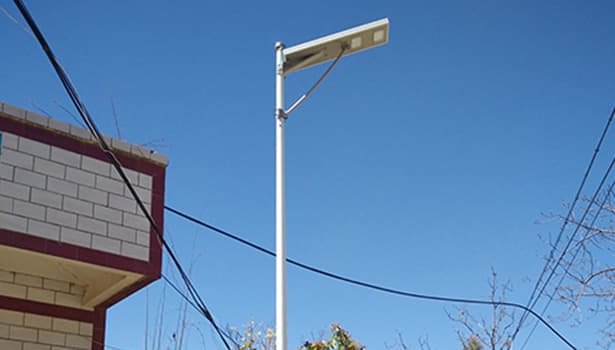
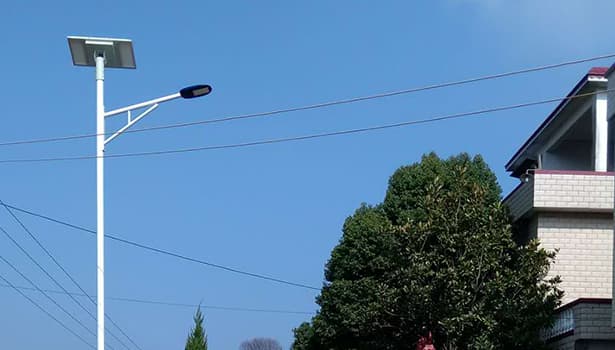
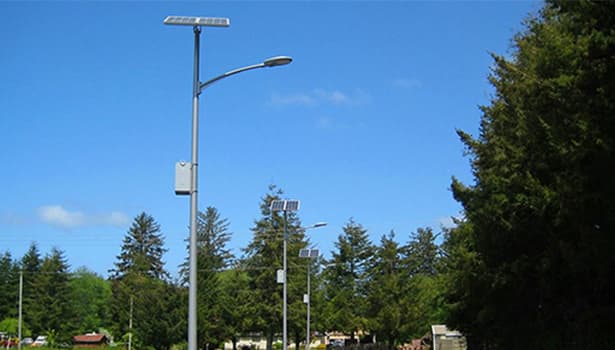
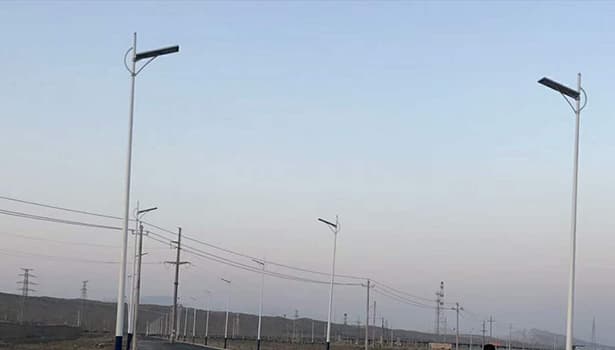
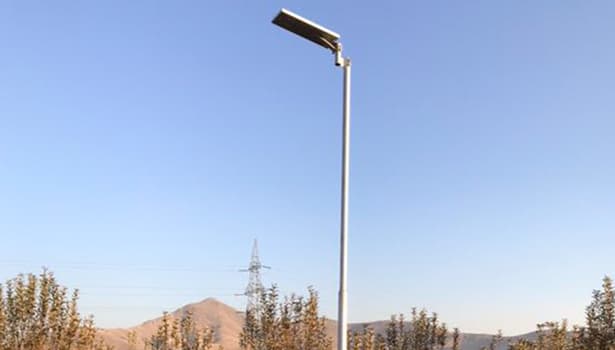

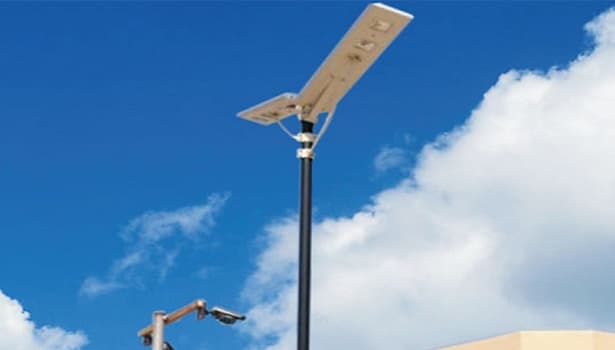
The efficiency of solar streetlights is affected by a variety of factors such as light duration and intensity, panel quality and efficiency, battery capacity and life, temperature and weather, installation and maintenance, lighting technology, and intelligent control systems. The efficiency and performance of solar streetlights can be further improved through rational selection of components, proper installation and maintenance, and application of intelligent technologies. In different scenarios, such as urban and suburban areas, rural and remote areas, parking lots, and commercial spaces, as well as disaster-prone areas, solar street lights play an important role in providing reliable lighting protection for people's lives and travel.
Taken as a whole, solar street light is an efficient, reliable, and environmentally friendly lighting option, which is worth promoting its use in more areas. Let's look forward to solar street lights in the future to create a brighter, greener, safer living environment for us.

Working principle of solar street lights
1839 French physicist Alexandre Edmond Becquerel discovered the photovoltaic effect; this effect revealed the mystery of solar energy into electricity, laying the foundation for the birth of solar street lights. The working principle is as follows:1.Core components:
Solar street lights are mainly composed of photovoltaic panels (solar panels), rechargeable batteries, LED lights, and related control devices. A solar panel consists of multiple solar cells, and each solar cell contains multiple layers of crystalline silicon and chemical substances, which interact to form a negatively charged electron layer and a positively charged hole layer, which is the key structure to realize the photoelectric conversion.2.Daytime Energy Harvesting and Storage:
Solar cells play a key role during the day when there is plenty of sunlight. When direct sunlight hits the solar cell, photons interact with electrons, which are activated by energy and enter the positively charged hole layer, resulting in the directional movement of electrons and the formation of an electric current. The resulting DC is transmitted through the circuit and is stably stored in the rechargeable battery under the precise regulation of the charge controller. The charge controller ensures that the battery is charged at the right voltage and current, avoiding overcharging or undercharging and prolonging the service life of the battery.3.Night Lighting Work:
When night falls, the photoreceptors on the solar street light start to work. The photoreceptors can keenly detect the weakening of light, at which time they automatically activate the relevant circuits to deliver the electricity stored in the batteries to the LED lights, which glow under the drive of electricity, illuminating the surrounding area and providing lighting for pedestrians and vehicles. At dawn, when the photoreceptor senses sufficient sunlight, it will automatically cut off the power supply to the LEDs, putting the streetlight into standby mode, and waiting for the next charging-lighting cycle.4.Installation and Operation Characteristics:
Since the solar street light only relies on solar energy to work, there is no need to lay wires, so the installation location is more flexible. They are usually installed on lighting structures that can fully receive sunlight to maximize the use of solar energy and maximize the coverage of the lighting range. Moreover, the operation of solar street lights is not restricted by the power grid, and they can work stably in power outages or remote areas without power grids, providing a reliable guarantee for the lighting needs in different scenarios.
Significant advantages of solar street lights
1. Energy efficiency
Solar street lights to solar energy as a source of energy, solar energy is an inexhaustible, inexhaustible renewable energy. With traditional street lamps relying on the utility differently, solar street lamps do not need to consume traditional fossil energy, greatly improving the efficiency of energy use and reducing the pollution of the environment. During the day, the solar panel fully collects solar energy and converts it into electricity to store it and then releases electricity for lighting at night. The whole process is highly efficient and environmentally friendly.2. Cost savings
Undeniably, the initial purchase and installation costs of solar street lights are relatively high compared to traditional street lights, which require the purchase of solar panels, batteries, LED lights, and related control equipment, etc. However, in the long run, its cost is higher than that of traditional street lights. However, in the long run, its cost advantage is very obvious. Solar street lights rely on solar power and do not need to pay the monthly electricity bill, which reduces the economic burden of the user to a certain extent. Moreover, due to its relatively simple structure, the main components, such as solar panels and LED lights, have a longer service life and lower maintenance costs. Taken together, the long-term use of solar street lights can save users a lot of money.3. Independent and Reliable
One of the significant features of solar street lights is that they operate independently of the power grid. This means that in the case of grid failure or power outages, solar street lights are still able to work normally to provide lighting for the road. For remote areas, especially those areas not covered by the power grid or unstable power supply, this advantage of solar street lights is more prominent. In mountainous areas, islands, and other remote areas, solar street lights can easily solve the lighting problem, providing convenience for local residents' lives and travel.4. Convenient Installation
The installation process of solar street lights is relatively simple, without the need for complex wiring work like traditional street lights. Simply install the solar street light in a suitable location to ensure that the solar panel can fully receive sunlight. This convenient installation allows the solar streetlight to be deployed quickly, and the installation position can be flexibly adjusted according to the actual demand. In some temporary activities or areas that require temporary lighting, solar street lights can be quickly installed and put into use to meet the temporary lighting needs.5. Environmental benefits
Solar street lights in the operation process do not produce any pollutants, such as carbon dioxide, sulfur dioxide, etc. The use of solar street lights can effectively reduce carbon emissions, reduce the negative impact on the environment, and help promote the development of green environmental protection. In the context of global advocacy of energy saving and emission reduction, the environmental advantages of solar street lights are particularly important; it is one of the important initiatives to achieve sustainable development.6. Functional diversity
With the continuous development of science and technology, solar street lights are no longer limited to simple lighting functions. Nowadays, solar streetlights can integrate various intelligent technologies, such as motion sensors, dimming systems, and remote monitoring systems. Through the motion sensor, the streetlight can automatically increase the brightness when it detects people or vehicles passing by and decrease the brightness when no one is there, thus realizing energy savings. The dimming system can automatically adjust the brightness of the streetlight according to changes in ambient light, ensuring lighting effects and saving energy at the same time. The remote monitoring system is convenient for managers to understand the running status of street lights in real-time and find and solve problems in time.
Analysis of the reliability of solar street lights
1. Brightness
Many people have doubts about the brightness of solar street lights, worrying that they cannot meet their lighting needs. Modern solar street lamps generally use LED technology, LED lamps with high efficiency and energy-saving features. Compared with traditional high-pressure sodium lamps (HPS) or metal halide lamps (MH), LED lamps per watt can produce more light. This means that under the same power, the LED lamps equipped with solar street lights can provide enough brightness to meet the requirements of road lighting. Moreover, through the reasonable design and layout of the lamps and lanterns, a uniform lighting effect can be achieved, avoiding the emergence of lighting dead ends.2. Maintenance issues
The maintenance needs of solar street lights are relatively low. The service life of LED lamps is usually between 50,000 and 100,000 hours, which means that there is no need to replace the lamps for a long period. Solar panels also have a long lifespan, typically up to 25 years or more, and only require regular cleaning to remove surface dust and debris to ensure their proper photovoltaic conversion efficiency. In addition, since solar street lights do not require the laying of underground cables, reducing the maintenance work caused by cable failures, they can be almost maintenance-free.3. Applicable area
Some people think that solar street lights in areas with insufficient light, such as cloudy areas or high latitudes, may not work properly. However, with the continuous progress of solar energy technology and battery technology, this concern has been gradually eliminated. Today's solar panels and batteries have made significant improvements in conversion efficiency and energy storage capacity. Even in areas with relatively poor lighting conditions, solar panels can collect enough energy in a limited amount of light time and store it in highly efficient batteries to ensure that streetlights work properly at night. In some northern high-latitude areas, although the sunshine time is shorter in winter, the solar street light can still operate stably through a reasonable configuration of solar panels and batteries.4. Cost
Although the initial investment in solar street lights is relatively high, from the perspective of long-term use, its cost-effectiveness is very considerable. In addition to the previously mentioned savings in electricity and maintenance costs, solar streetlights also reduce a series of costs arising from the construction of grid facilities, such as cable laying and substation construction. Moreover, with the continuous maturity of the technology and the continuous development of the market, the cost of solar street lights is also gradually reduced. Considering it comprehensively, the long-term cost of solar street lights is much lower than that of traditional street lights, which have high-cost performance.
Factors affecting the efficiency of solar street lights
1. Light duration and intensity
Light duration and intensity are the key factors affecting the efficiency of solar street lights. The longer the illumination time and the higher the sunlight intensity in a region, the more energy can be collected by the solar panel of the solar street light, thus improving the working efficiency of the street light. In addition to light duration and intensity, the angle of the sun should not be ignored. In the northern hemisphere and other seasonal changes in the region, the summer sunshine time is long, the sun angle is high, and the solar panel of the solar street light can collect enough energy in a relatively short period; while in winter, the sunshine time is short, the sun angle is low, and the efficiency of the solar panel to collect energy will be reduced. Therefore, when selecting components for solar street lights, it is necessary to give full consideration to the local geographic location and climatic conditions, especially the light conditions in winter, to ensure that the street lights can work properly under all circumstances.2. Panel quality and efficiency
The quality and efficiency of solar panels directly determine the performance of solar streetlights. High-quality and high-efficiency solar panels can produce more electricity under the same light conditions. Although the price of such solar panels is relatively high, in the long run, they can provide sufficient energy for the street light in a shorter period, reducing the need for large-area solar panels and thus lowering the overall cost. Furthermore, quality solar panels are made of durable materials that can withstand long periods of exposure to the elements, reducing the cost of repairs and replacements due to panel damage. When choosing solar panels, look for IEC certification and a 25- to 30-year performance warranty to ensure quality and performance. Additionally, the size of a solar panel can affect its ability to collect energy, with larger panels being able to collect more sunlight and produce more electricity. For some commercial premises that need to provide reliable lighting throughout the night, you should avoid choosing solar panels that are too small in size so as not to affect the lighting effect.3. Battery capacity and life span
The battery is the key component of the solar street light to store energy; its capacity and life span directly affect the street light's continuous lighting ability. High-capacity batteries can store more power to ensure that the street light works normally at night and on cloudy days when the light is insufficient. At the same time, the life of the battery is also critical; a long-life battery can reduce the frequency of battery replacement and reduce maintenance costs. With the continuous development of battery technology, the new nickel-metal hydride batteries and lithium iron phosphate batteries have higher energy density and longer service life, which can allow users to more fully utilize the battery capacity without shortening the battery life. To extend the battery life, some energy-saving measures can be adopted, such as setting energy-saving modes, adjusting lighting brightness according to different periods, and using intelligent energy management systems.
4. Temperature and weather
Temperature and weather conditions also have a large impact on the efficiency of solar street lights. High temperatures reduce the conversion efficiency of some solar panels, leading to a reduction in the amount of electricity they produce. Temperature also has a significant impact on battery life. For example, high temperatures can shorten the life of lead-acid batteries by half or even more, while low temperatures may damage lithium batteries. Therefore, when choosing components for solar street lights, solar panels with temperature-resistant characteristics and batteries suitable for extreme climatic conditions should be selected. Nickel-metal hydride batteries can adapt to a wide range of temperatures, making them a better choice for extreme temperatures. In this way, whether in the hot summer or cold winter, solar street lights can maintain high efficiency.5. Installation and Maintenance
Correct installation and timely maintenance are an important guarantee to ensure the efficient operation of solar street lights. When installing solar street lights, it should be ensured that the height, angle, and spacing of the street lights meet the actual application requirements. The solar panels should be oriented as far south as possible to obtain the maximum light area and light intensity. If the solar panels are not oriented correctly, their efficiency in collecting solar energy will be drastically reduced. After the installation is completed, a thorough test should be carried out according to the manufacturer's requirements to ensure that all components of the streetlight are working properly. During daily use, check the operation of the streetlight regularly, replace worn or damaged parts in time, and keep the surface of the solar panel clean to improve the overall efficiency of the solar streetlight. Only by doing a good job of installation and maintenance can solar streetlights provide lighting services for roads in a long-term and stable manner.6. Lighting technology
The choice of lighting technology has an important impact on the efficiency and performance of solar street lights.LED lights have become the preferred lighting technology for solar street lights because of their energy-saving, high efficiency, and long life. Compared with traditional compact fluorescent lamps (CFLs) or halogen lamps, LED lamps consume less energy and can provide brighter lighting effects with the same power input. In addition, LED lamps have a long lifespan, which reduces the hassle and cost of replacing lamps frequently. In addition, LED lights also have good dimming performance, according to the ambient light and the actual demand to adjust the brightness and further improve energy efficiency.7. Intelligent control system
The application of intelligent control systems can significantly improve the efficiency of solar street lights. Through a wireless or embedded control system, a solar street light can automatically adjust the lighting output according to the local environmental conditions and time. When pedestrians are scarce late at night, the streetlight can automatically reduce the brightness to save energy, while when people or vehicles are passing by, the streetlight will automatically increase the brightness to ensure lighting safety. This intelligent control not only reduces energy consumption but also extends the service life of streetlights, providing users with more personalized and efficient lighting services.
Wide Application of Solar Street Lights
1. Urban and Suburban Areas
In densely populated areas such as cities and suburbs, solar street lights provide clean and efficient lighting solutions for roads, parks, and sidewalks. In some old urban areas, the power supply and maintenance costs of traditional streetlights are high due to the difficulty of grid reconstruction, and the emergence of solar streetlights has well solved these problems. Solar street lights do not need to rely on the existing power grid, are easy and quick to install, and can quickly improve lighting conditions. In urban parks, solar street lights not only provide lighting but also blend with the surrounding natural environment to create a comfortable and beautiful night atmosphere.2. Rural and remote areas
For rural and remote areas, the advantages of solar street lights are more obvious. These areas are often poorly covered by the power grid, the power supply is unstable, and the cost of laying the power grid is also very high. The independent power supply characteristic of solar street lights makes them an ideal choice for lighting in these areas. In remote rural villages, solar street lights illuminate the travel paths of villagers and facilitate their activities at night. On highways in mountainous areas, solar street lights provide reliable lighting for passing vehicles and improve driving safety.3. Parking lots and commercial space
Solar street lights in parking lots and commercial spaces are also more and more widely used. Parking lots usually require large areas of lighting, and the autonomous operation and low maintenance costs of solar streetlights make them the first choice for parking lot lighting. Owners and property managers of commercial spaces can reduce lighting costs while enhancing the environmental image of the premises by installing solar street lights. In the parking lots of some large shopping centers, solar streetlights not only provide adequate lighting but also reduce management costs due to wiring and electricity costs.4. Disaster-prone areas
In natural disaster-prone areas, the reliability and independence of solar street lights play an important role. In earthquakes, floods, and other disasters, the power grid is often severely damaged, resulting in widespread power outages. Solar street lights do not rely on the power grid and can continue to provide lighting for roads and public places during disasters, guaranteeing the smooth progress of rescue work and improving the residents' sense of security. In some coastal areas that are often hit by typhoons, solar street lights can quickly restore lighting after disasters, providing strong support for the recovery and reconstruction of disaster areas.
Conclusion
Solar street light, with its unique working principle, shows many advantages such as high energy efficiency, cost savings, independence and reliability, convenient installation, significant environmental benefits, and diverse functions. Although there are some misconceptions about brightness, maintenance, applicable area, and cost, in fact, with the continuous progress of technology, these problems have been effectively solved.The efficiency of solar streetlights is affected by a variety of factors such as light duration and intensity, panel quality and efficiency, battery capacity and life, temperature and weather, installation and maintenance, lighting technology, and intelligent control systems. The efficiency and performance of solar streetlights can be further improved through rational selection of components, proper installation and maintenance, and application of intelligent technologies. In different scenarios, such as urban and suburban areas, rural and remote areas, parking lots, and commercial spaces, as well as disaster-prone areas, solar street lights play an important role in providing reliable lighting protection for people's lives and travel.
Taken as a whole, solar street light is an efficient, reliable, and environmentally friendly lighting option, which is worth promoting its use in more areas. Let's look forward to solar street lights in the future to create a brighter, greener, safer living environment for us.




